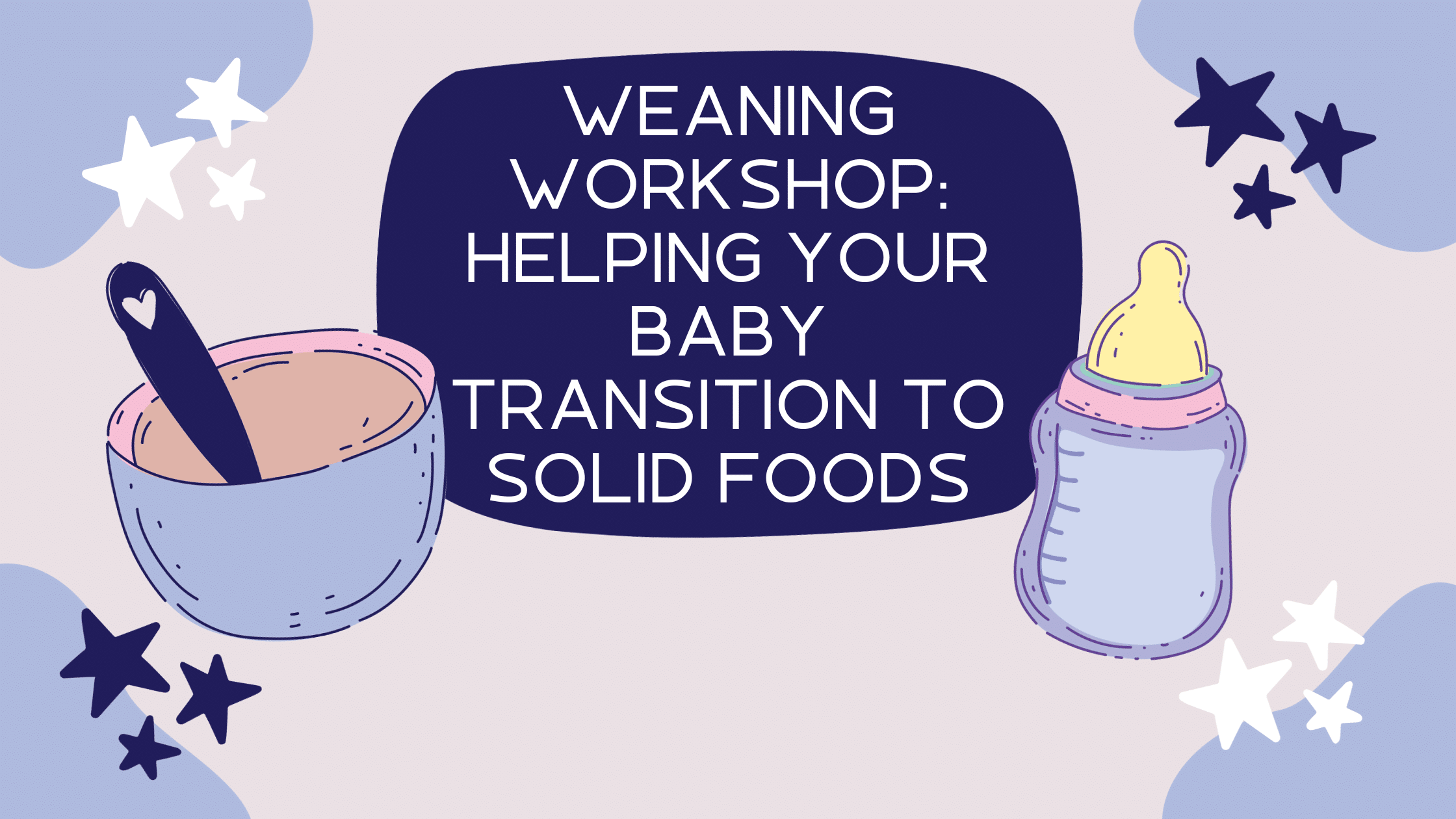As a parent, one of the most exciting milestones you’ll experience with your baby is weaning. Weaning is the process of introducing solid foods to your baby’s diet, and it’s a crucial step in their development.
It’s an exciting time, but it can also be overwhelming, especially if you’re a first-time parent. That’s where one of my weaning workshops comes in.
I am Joanna Coulthard, an infant feeding specialist and in this article, I’ll share with you everything you need to know about weaning, including when to start, signs that your baby is ready and so much more.
- When to Start Weaning
- Different Weaning Approaches
- Preparing for the Weaning Process
- Introducing Different Food Groups
- Tips for Successful Weaning
- Dealing with Challenges During the Weaning Process
- Weaning Workshop Options and Benefits
- The Next Steps
When to Start Weaning
The World Health Organisation (WHO) recommends that babies are exclusively breastfed for the first six months of life. After six months, you can start introducing solid foods alongside breast milk or formula. However, every baby is different, and some may be ready to start weaning earlier or later than others.
It’s essential to look out for signs that your baby is ready for solid foods. These signs include being able to sit up unsupported, showing an interest in what you’re eating, and being able to coordinate their mouth and tongue movements. However, you should avoid starting weaning too early, as your baby’s digestive system may not be ready to handle solid foods yet.
Different Weaning Approaches
There are two main approaches to weaning:
Spoon-fed Weaning:
Spoon-fed weaning involves feeding your baby pureed or mashed foods from a spoon, while baby-led weaning involves letting your baby feed themselves with finger foods. Both approaches have their advantages and disadvantages, and it’s up to you to choose which one works best for you and your baby. With spoon-fed weaning, you have more control over what your baby eats and can ensure they’re getting all the nutrients they need.
Baby-led Weaning:
Baby-led weaning, on the other hand, allows babies to explore different textures and develop their hand-eye coordination. However, it can be messy, and there’s a risk of choking if you don’t choose appropriate foods.
Preparing for the Weaning Process
Before you start weaning, there are a few things you can do to prepare.
- Highchair: Invest in a good highchair that’s easy to clean and has a secure harness to keep your baby safe.
- Baby Weaning Essentials: Stock up on weaning essentials such as bibs, spoons, and bowls.
- Foods: You’ll also need to think about what foods you’ll be introducing and make sure you have everything ready. It’s a good idea to start with single-ingredient foods such as pureed fruits and vegetables and gradually introduce more complex flavours and textures.
- Join A Class: I lead baby weaning workshops, in which you can learn all about the process and gain valuable skills to use within classes and at home.

Introducing Different Food Groups
When it comes to weaning, it’s essential to introduce a variety of different food groups to ensure your baby gets all the nutrients they need.
These food groups include fruits and vegetables, carbohydrates such as bread and pasta, protein sources such as meat, fish, and eggs, and dairy products such as cheese and yoghurt.
It’s essential to introduce these foods gradually and watch out for any allergic reactions.
Tips for Successful Weaning
Weaning can be a challenging process, but there are several things you can do to make it go more smoothly.
- Be Patient: Be patient and don’t force your baby to eat anything they don’t want to. Remember that it can take several tries before your baby accepts a new food.
- Make Meals Fun: Make mealtimes fun and interactive by talking to your baby and making eye contact.
- Variety: Offer a variety of different foods and textures to keep your baby interested.
- Don’t Panic: Don’t worry too much about how much your baby eats, as they’ll still be getting most of their nutrition from breast milk or formula.
Dealing with Challenges During the Weaning Process
Weaning isn’t always easy, and there are several challenges you may encounter along the way.
- Fussy Eaters: If your baby refuses to eat, try offering the food again later or offering a different food. If your baby still refuses to eat, don’t worry too much, as it’s normal for babies to have ups and downs with their appetite.
- Constipation: Another challenge you may encounter is constipation, which can be caused by introducing new foods. To prevent constipation, make sure your baby is drinking plenty of fluids and introduce high-fibre foods such as prunes and pears.
Weaning Workshop Options and Benefits
Attending a weaning workshop can be a great way to get more support and advice on the weaning process. My weaning workshops will cover everything from when to start weaning to how to deal with fussy eaters and constipation.
You can also ask questions and meet other parents going through the same process. Get expert advice, learn new weaning recipes, and gain confidence in your weaning abilities.
A weaning workshop can also be a great way to get your baby used to eating in a social setting and can help them develop their social skills.
The Next Steps
Weaning is an exciting milestone in your baby’s development, but it can also be challenging. By following the tips and advice in this article, you can help make the weaning process go more smoothly. If you’re feeling overwhelmed or unsure, consider attending a weaning workshop for more support and advice.
Remember that every baby is different, and there’s no right or wrong way to wean. With patience and perseverance, you’ll get there in the end.
So, if you’re looking for more support and guidance on weaning, check out my weaning workshops on my website today!

